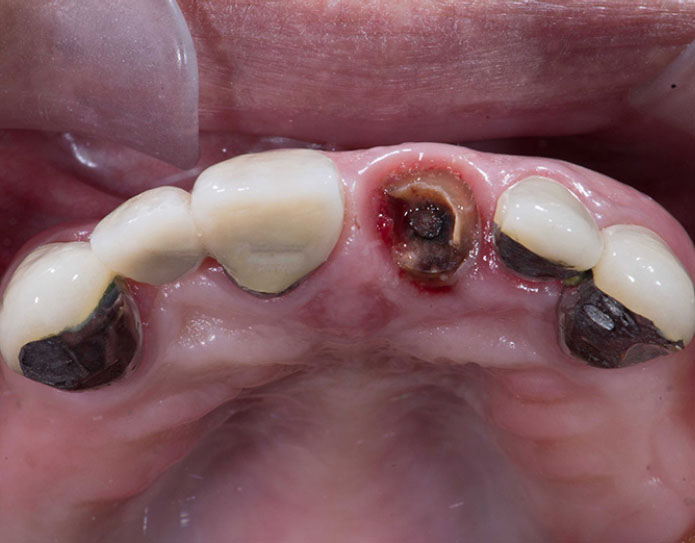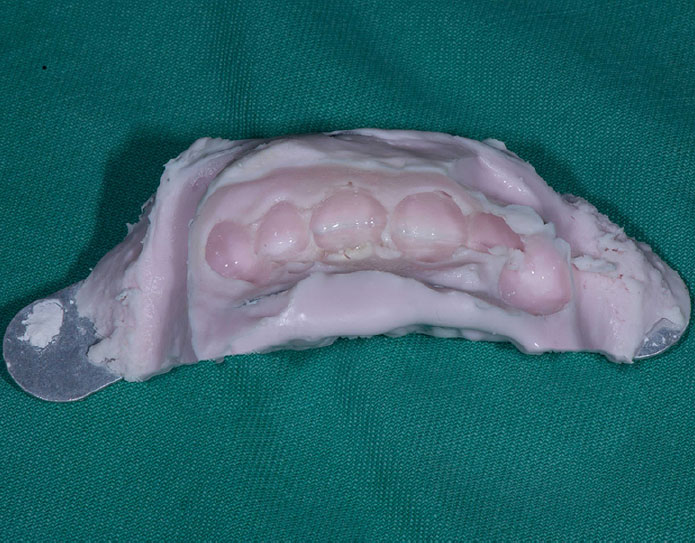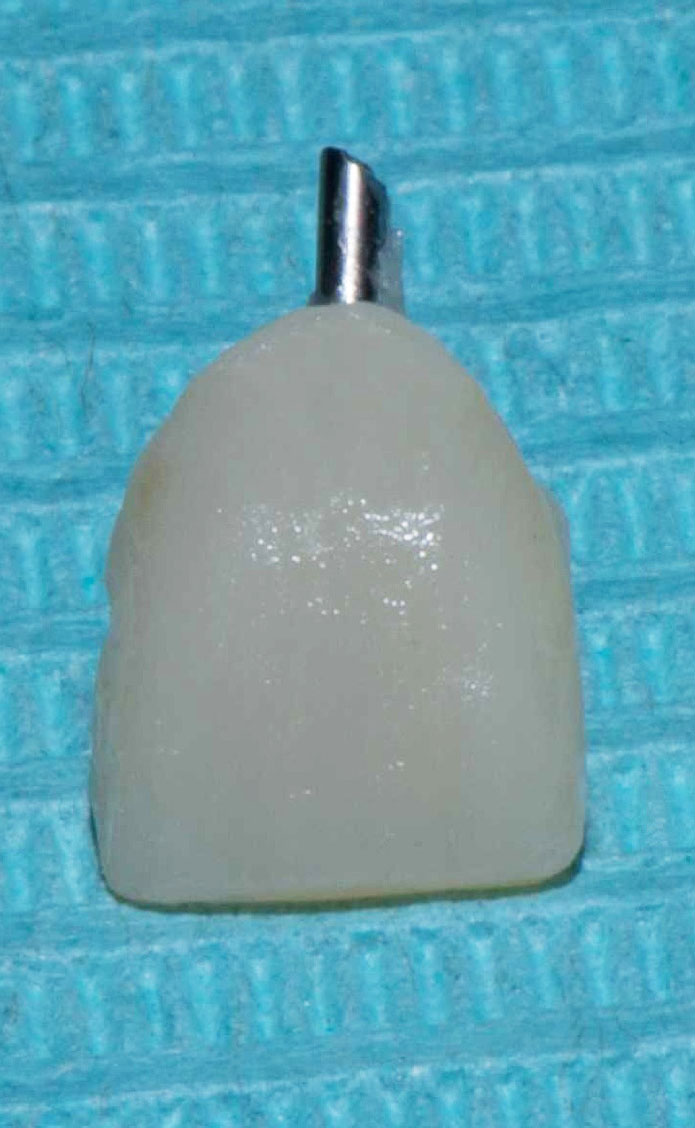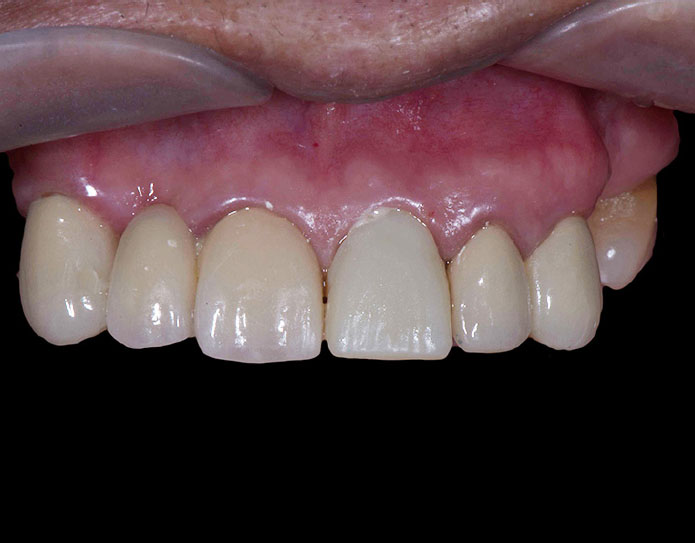Article
Traumatic injuries are not uncommon in dental practice. They are one of the principal causes of emergency treatment, especially when trauma is associated with anterior teeth. The consequences of dental trauma involves tooth structure loss that can be associated with pain, discomfort, appearance concern and a negative psychological impact on the patient. Management of patients with fractured endodontically-treated crowned teeth may require immediate temporary management. In cases when the tooth is restorable, the tooth may require further treatments, like re-endodontic treatment, crown lengthening or orthodontic extrusion, to expose the fractured margin and establish a ferrule. Hence, the described technique can be successfully applied to establish aesthetics and coronal seal during the course of treatment. Meanwhile, in cases when the tooth is non-salvageable, it will require extraction. However, the patient may hope to retain the tooth because, psychologically, he/she is not yet prepared to accept an extraction. Hence, appropriate temporization becomes important.
Here, a technique is presented to temporize an anterior tooth, where the tooth is compromised because of cervical fracture and the crown prosthesis is available.
Case report
A 60-year-old female patient attended complaining of a fractured UL1 while eating. She was keen to have the crown replaced. Medically she reported hypertension and hypercholesterolemia controlled by medication. History, clinical examination and investigations revealed that UL1 had undergone endodontic treatment with placement of a fibre post and porcelain-fused-to-metal (PFM) crown two years previously. Extra-oral examination was undertaken with no abnormality being detected. The patient had a low smile line according to Tjan and Miller,1 and intra-orally, the oral hygiene was good, with multiple edentulous spaces restored with removable chrome cobalt dentures. It was noticed that the root of UL1 was fractured cervically with small remnants of root fragments, which were removed by a probe from the gingival sulcus; the ferrule was category D according to Jotkowitz and Samet2 (Figure 1). The lingual and mesial walls were lost. A periapical x-ray revealed that the root was well obturated apically with a post and no periapical radiolucency. The fracture was associated with the cervical portion of the root, root length being estimated at around 11 mm. Based on Samet and Jotkowitz3 the tooth was non-salvageable (Class X), and indicated for extraction (Figure 1). However, the patient refused to have the tooth extracted initially, and psychologically she was not keen to lose a front tooth. Hence, a temporary measure was needed to temporize the tooth, maintain aesthetics and for the extraction to be considered and planned later.

In this case, a simple technique is presented to restore a fractured crowned tooth temporarily and maintain aesthetics and function:



Discussion
A new temporary crown in this case was made because the fitting of the fractured crown was not optimal. To enhance fitting and prevent plaque accumulation by eliminating plaque retentive area, a new temporary was used rather than the existing PFM crown. If the marginal fit of the crown had been optimal, the core from the crown could have been removed, one third to a half of the post from the canal prepared, and temporary post and core done, together with the existing PFM crown, to increase the means of retention to dislodgment.
There are many materials that can be used for index fabrication. These can vary from alginate and additional silicone, like polyvinylsiloxane (PVS) and polyether. Furthermore, there are many materials that can be used to fabricate a provisional crown or restoration as well. These can vary from polymethylmethacrylate, ethylmethacrylate and resin-based. Examples are listed in Table 1.6
| Type | Brand | Manufacturer | Advantages | Disadvantages |
|---|---|---|---|---|
| Methylmethacrylate | SNAP® | Parkell, USA | Good marginal fit |
High exothermic reaction |
| UNIFAST™ LC | GC, Belgium | |||
| Ethylmethacrylate | Trim® | Bosworth, USA | Good polishability |
Surface hardness |
| Trim® II | ||||
| BIS-Acryl composite | Protemp™ | 3M, ESPE, Germany | Good marginal fit |
Surface hardness |
| Temphase™ | Kerr, USA | |||
| Bis-GMA composite | TempSpan® | Pentron Clinical Tech | Good marginal fit |
Regarding cementation of the temporary post and crown, temporary cements, such as eugenol or non-eugenol zinc oxide cements, are the best choice for temporization. But when retention is questionable, stronger cements such as zinc polycarboxylate can be used to avoid premature decementation, as was used in this case.5

